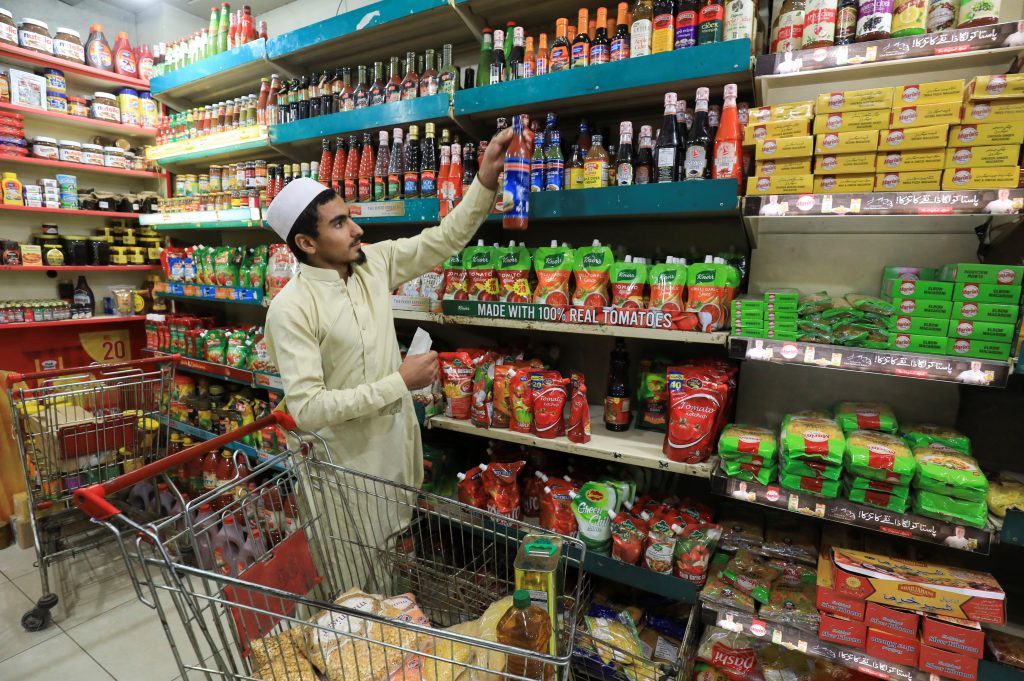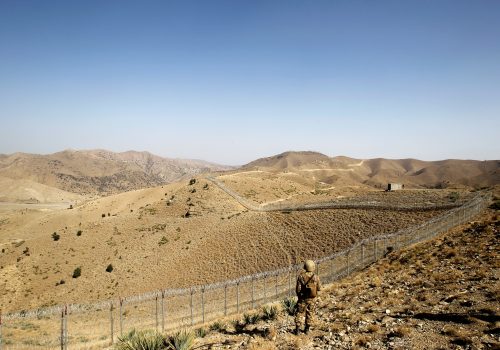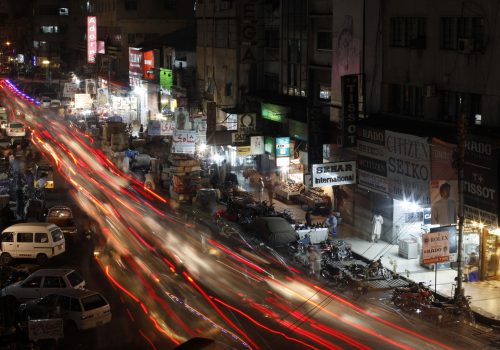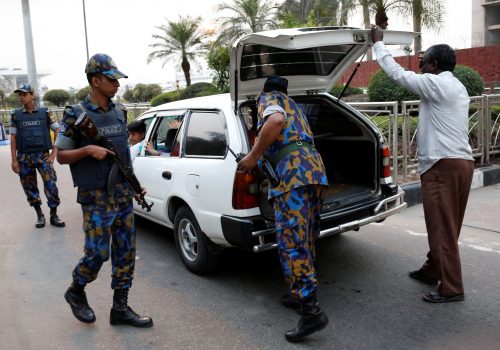The idea of a free trade agreement (FTA) between Pakistan and Bangladesh was first proposed in 2002. This was further discussed at the 2004 South Asian Association for Regional Cooperation (SAARC) summit by the commerce ministers of both countries. When negotiations began, Bangladesh put forward its demand for free access to Pakistan’s markets within one year of the signing of the FTA, citing Bangladesh’s status as a Least Developed Country (LDC). Bangladesh also insisted on a “negative list approach” in the trade negotiations to protect its domestic industries.
Pakistan, on the other hand, was not willing to grant unilateral and unconditional access to its market. Islamabad proposed instead a relaxed set of origin rules, lower direct tariffs, elimination of non-tariff barriers (NTBs), a more extended phase-out period for tariff withdrawal, greater reliance on anti-dumping, and countervailing measures for moving negotiations forward. Ultimately, these efforts stalled. However, there has been renewed interest between Islamabad and Dhaka to revisit the option of signing an FTA between the two countries.
Bangladesh’s graduation from LDC status: An opportunity for Pakistan?
Bangladesh is increasingly focused on bilateral, preferential trade agreements (PTAs) FTAs to enhance export revenues and obtain improved market access in the next three to six years as it prepares to graduate from LDC status in 2026. The Bangladeshi government is also reviewing the possibility of trade agreements with forty-four countries to see if PTAs are possible. Dhaka has similarly approached eleven countries to sign free trade agreements. Though Pakistan is not currently a significant export market for Bangladesh, the government of Bangladesh is likely to view Pakistan’s 220 million population as a market in the medium to long term. As such, since the Bangladeshi government appears open to signing trade agreements, Pakistan should capitalize on this opportunity and negotiate an FTA or a PTA with Dhaka.
Relatedly, the Pakistan Business Council (PBC), a pan-industry advocacy forum based in Karachi, released a comprehensive study, “Trade and Investment Opportunities in a Pakistan – Bangladesh Free Trade Agreement (FTA),” that examines the challenges and benefits of a potential FTA between Pakistan and Bangladesh. The report revealed that bilateral trade between Pakistan and Bangladesh has always been in favor of Pakistan. However, exports to Bangladesh decreased from $947.23 million in 2011 to $583.44 million in 2020. Although Pakistan is one of Bangladesh’s top ten import partners, its market share has declined by 8.4 percent, indicating that Pakistan’s export competitiveness has fallen in the Bangladeshi market. In addition, Pakistan’s imports from Bangladesh have also declined from $82.73 million in 2011 to $61.94 million in 2020, resulting in a positive balance for Pakistan of $521.50 million in 2020; this is Pakistan’s lowest trade surplus with Bangladesh in the last decade. Currently, Pakistan’s exports to Bangladesh are at least nine times more than its imports from that country.
According to the International Trade Centre’s (ITC) Trade Map data, in 2020, Pakistan’s exports to Bangladesh were dominated by cotton, which accounted for 73.3 percent of total exports. Other major Pakistani exports to Bangladesh in 2020 were “Salt; Sulphur; earth and stone; plastering materials, lime, and cement” ($73.7 million); “edible vegetables” ($17.5 million); “raw hides and skins” ($9.8 million); “Machinery” ($9.7 million); “inorganic chemicals” ($4.4 million); “man-made staple fibers” ($4.0 million); “plastics” ($3.9 million), “tanning or dyeing extracts” ($3.9 million); and “edible fruits and nuts” ($3.2 million). The top 10 exports accounted for 95.6 percent of total exports to Bangladesh, indicating that exports to Bangladesh are highly concentrated. Moreover, Pakistan’s exports to Bangladesh positively correlate with Bangladesh’s foreign direct investment (FDI) and gross domestic product (GDP) growth, whereas negatively correlate with the exchange rate.
In 2020, Pakistan’s leading import from Bangladesh was “other vegetable textile fibres” which accounted for 77.5 percent of total imports. In the 2020-21 budget, the federal government evolved a strategy to encourage raw jute import mainly from Bangladesh to promote exports of jute-based processed products from the country. Pakistan’s imports from Bangladesh have witnessed a surge of 49.2 percent in the last year. The most significant increase was recorded in the imports of “man-made staple fibers” indicating that this industry is developing in Bangladesh and has exportable surpluses.
According to the PBC’s analysis, for Pakistan, there exists an export potential of at least $2.95 billion in Bangladesh, mainly driven by sectors such as textiles, agriculture, foodstuff, chemicals, base metals, plastics, and salt & cement products. The aggregate export potential for the top twenty-five commodities amounted to $1.24 billion in 2020. However, the country only exported goods worth $435.78 million for these top twenty-five commodities to Bangladesh during the year. Ten of the top twenty-five products fall under the category of denim and Woven Fabrics of Cotton. While Pakistan can potentially export $522.74 million worth of these commodities, it exported $341.25 million worth of woven fabrics to Bangladesh in 2020.
The commercial counselor of the Pakistani High Commission in Dhaka, interviewed for this report, underlined some key aspects that need to be addressed at the grassroots level to develop economic and business ties between the two neighboring countries. He mentioned that delays in clearing non-nominated Pakistani consignments at the Chittagong port are indeed a result of severe congestion, which causes a vessel backlog at the outer anchorage lasting several days to more than a week. There is no facility for direct shipment of goods between Pakistan and Bangladesh. Pakistan’s export cargo is transshipped via Singapore or Colombo to Chittagong; since vessels have to wait for berthing, freights are more susceptible to delays. The extra fifteen to twenty days add up to a total of thirty-five to forty days for the batches to arrive. Indirect shipping is slower and incurs more cost (transportation charges) than expedited shipping. However, efforts are being made and the Pakistan National Shipping Corporation (PNSC) has forwarded a proposal to the procurement department to establish a direct shipping line.
Furthermore, businessmen and exporters on both sides face stringent visa rules that are motivated by political bias and improper considerations. Concurrently, prejudice is also evident at the Chittagong port, where several separate counters for verification and scrutiny further delay clearance for Pakistani exporters. In response to the tariff and non-tariff obstacles encountered by Pakistani exporters, the representative of the commercial section stated that there are no explicit import restrictions on Pakistan as a consequence of the absence of a discriminatory tariff structure. Pointing out the current tariff structure, he highlighted that there is room for tariff cuts for goods traded between the two countries.
According to the ITC trade map data, Bangladesh is subjected to significantly higher tariffs than its counterparts in Pakistan. According to the PBC’s analysis, the ad valorem equilibrium tariff applied by Pakistan on products originating from Bangladesh ranges from 2 percent to 59 percent, with an average rate of 7.8 percent. However, Pakistani exporters who export to Bangladesh incur tariffs ranging from 0 percent to 25 percent, with an average rate of 9 percent. Due to its rapid industrialization, Bangladesh has emerged as a leading importer of cotton yarn and woven fabric. Pakistan has enormous untapped potential in the textile sector, where a well-negotiated trade agreement can significantly boost textile exports. However, some pitfalls are associated with the businesses. According to the input from the Commercial Section of the Pakistani High Commission in Dhaka, the increased smuggling of Pakistani manufactured women’s designer clothes through the United Arab Emirates appears to be creating administrative, legal, and logistical challenges for Pakistani exporters. Textile articles from Pakistan are being smuggled into Bangladesh in airline passengers’ luggage because of the hefty duties imposed by the Bangladeshi government on imports from Pakistan. However, the government is not doing much to deter this illicit trafficking. As a result, a large portion of the transactional data goes unreported.
Pakistan’s agriculture and vegetable exports also face significant barriers in Bangladesh. Given that Pakistan is not among the primary sources of agriculture and vegetable goods for Bangladesh but has a high potential to supply these products, the provision of concessionary duties will increase the competitiveness of Pakistani products in the Bangladeshi market. This would enable Pakistan to compete on an equal footing with countries such as India and China. Pakistani food exports may be subject to testing by the Bangladesh Standard & Testing Institution (BSTI) and the Bangladesh Council of Scientific and Industrial Research (BCSIR). Therefore, the exporters must adhere to the compliance requirements set by the Bangladesh Standard (BDS). Considering this crippling impediment to trade, the BSTI has inked an agreement/MoU with the Pakistan Standards and Quality Control Authority (PSQCA) in the sphere of standards and quality assurance. This MoU must culminate in a Mutual Recognition Agreement to promote exports.
On the other hand, according to the data published by the global trade alert, the Pakistani government enacted a total of seven new measures in 2020, four of which were discriminatory and three were liberalizing. A significant irritant for Bangladesh’s exports is the imposition of anti-dumping duty (ADD) on hydrogen peroxide. The National Tariff Commission of Pakistan issued a notification on August 26, 2020, imposing the ADD at two rates—15.38 percent and 16.10 percent, depending on the company—for five more years on hydrogen peroxide manufactured by Bangladeshi companies. Previously, on October 16, 2015, the NTC imposed a five-year definitive ADD on imports of the commodity mentioned above from Bangladesh at 10.67 percent and 12.14 percent, depending on the firm. However, the Bangladeshi commerce minister has requested that the NTC withdraw the ADD on exports of hydrogen peroxide in order to boost bilateral trade between Pakistan and Bangladesh. Bangladeshi exporters believe that Pakistan, including other Asian countries such as Sri Lanka, India, and China, have developed a syndicate-like arrangement to restrict the imports of potatoes from Bangladesh. Bangladeshi exporters allege that this syndicate prevents them from exporting to these nations.
Bangladesh is also seen as a potential investment and business hub in South Asia by many large economies. Bangladesh, which is expected to become a middle-income country on its 50th anniversary, appears to have evolved into an exciting possibility for many major brands due to its expanding economic prowess. Bangladesh seems to be developing into a market for global brands, with a number of them opening their own-label stores to capitalize on emerging opportunities. Several international retailers have opened their offices in Bangladesh’s Export Processing Zones (EPZs) to gain market access into Europe and other countries due to Bangladesh’s LDC status. Around 20 percent of total Bangladeshi exports to the world were generated through SEZs in 2011. Many Japanese buyers are establishing their businesses in Bangladesh at the cost of Pakistan. Numerous Japanese firms established their purchasing houses in Pakistan in 2003-04; later, when Bangladesh’s ready-made garments (RMG) industry grew in 2006, exports began to expand as a result of a wide range of policy initiatives. Subsequently, Japanese purchasing firms and international liaison offices relocated to Bangladesh from Pakistan. Japanese companies get their supplies from Pakistan, yet they run their operations from Bangladesh. For business negotiations and commercial discussions, Japanese companies prefer Bangladesh over Pakistan. As a result, Pakistan’s exports take a hit. Bangladesh also has a slew of international purchasing offices that conduct businesses with Pakistan. In Bangladesh, these purchasing houses have considerable capacity/size.
Recently, the Pakistan Business Council organized a webinar in collaboration with the High Commission of Pakistan in Dhaka, Bangladesh, as a follow-up to the study “Trade and Investment Opportunities in a Pakistan – Bangladesh FTA.” H.E. Imran Ahmed Siddiqui, Pakistan’s High Commissioner to Bangladesh, provided his valuable input and gave insights into the importance of improving bilateral relations. He stated that Pakistani leadership’s transformative economic agenda is mainly focused on transforming Pakistan into a commercial and investment hub and a dependable node connecting Asia’s different subregions. Bangladesh’s economy has developed to the point where enterprises may expand and invest in other countries. Bangladeshi businesses may explore opportunities offered by the China-Pakistan Economic Corridor (CPEC), which can also serve as a transport link for exporting goods to the West and Central China, Central Asia, and the Middle East at relatively cheaper rates.
Additionally, Bangladesh formalized its participation in China’s Belt and Road Initiative on October 15, 2016, during a visit by Chinese President Xi Jinping to the country. The program intends to build connectivity and cooperation along the CPEC corridor. On the other hand, the perception survey revealed that many Pakistani investors are still investing or willing to invest in Bangladesh despite the poor infrastructural conditions and unusual scrutiny requirements at airports. Pakistan and Bangladesh have strong ties on various subjects, particularly as part of many international multilateral forums, including United Nations (UN), the Organization of Islamic Cooperation (OIC), World Trade Organization (WTO), and the SAARC. Still, bilateral issues exist between the two countries. Despite the problems faced by Pakistani exporters, Bangladesh remained the tenth largest export destination for Pakistan in 2021, according to the data published by the ITC trade map. Pakistanis contributed to the development of Bangladesh’s RMG sector by exporting raw materials used by Bangladeshi apparel manufacturers. According to the ITC trade map data for 2020, Pakistan has the potential to export an additional $721.34 million worth of textile products to Bangladesh. Despite facing tariffs of up to 25 percent, Pakistan’s textile exports to Bangladesh have been increasing and have the potential to grow further. One of the largest Bangladeshi conglomerates, Advanced Chemical Industries (ACI), expressed interest in importing grey textiles and yarn from Pakistani firms, enabling Pakistani companies to acquire a larger share of Bangladesh’s textile market.
A well-negotiated FTA between Pakistan and Bangladesh will further boost textile exports, given that many possibilities of complementarities exist in the industry. Bangladeshi businesses are also optimistic about opportunities for collaboration but have been deterred by certain political difficulties. For that purpose, the High Commission of Pakistan in Dhaka is working closely with the Ministry of Commerce of Bangladesh to activate the long inactive Joint Economic Commission and to revive dormant consultative procedures at the government level. The expansion of cooperation and economic exchanges is attainable if stakeholders from both sides work together to promote trade and investment so that the benefits are mutual.
Nida Gulzar is a Senior Analyst at the Pakistan Business Council and holds an MPhil in Applied Economics.

The South Asia Center is the hub for the Atlantic Council’s analysis of the political, social, geographical, and cultural diversity of the region. At the intersection of South Asia and its geopolitics, SAC cultivates dialogue to shape policy and forge ties between the region and the global community.
Related content
Image: A man shops for grocery items in Peshawar, Pakistan December 13, 2021. REUTERS/Fayaz Aziz



